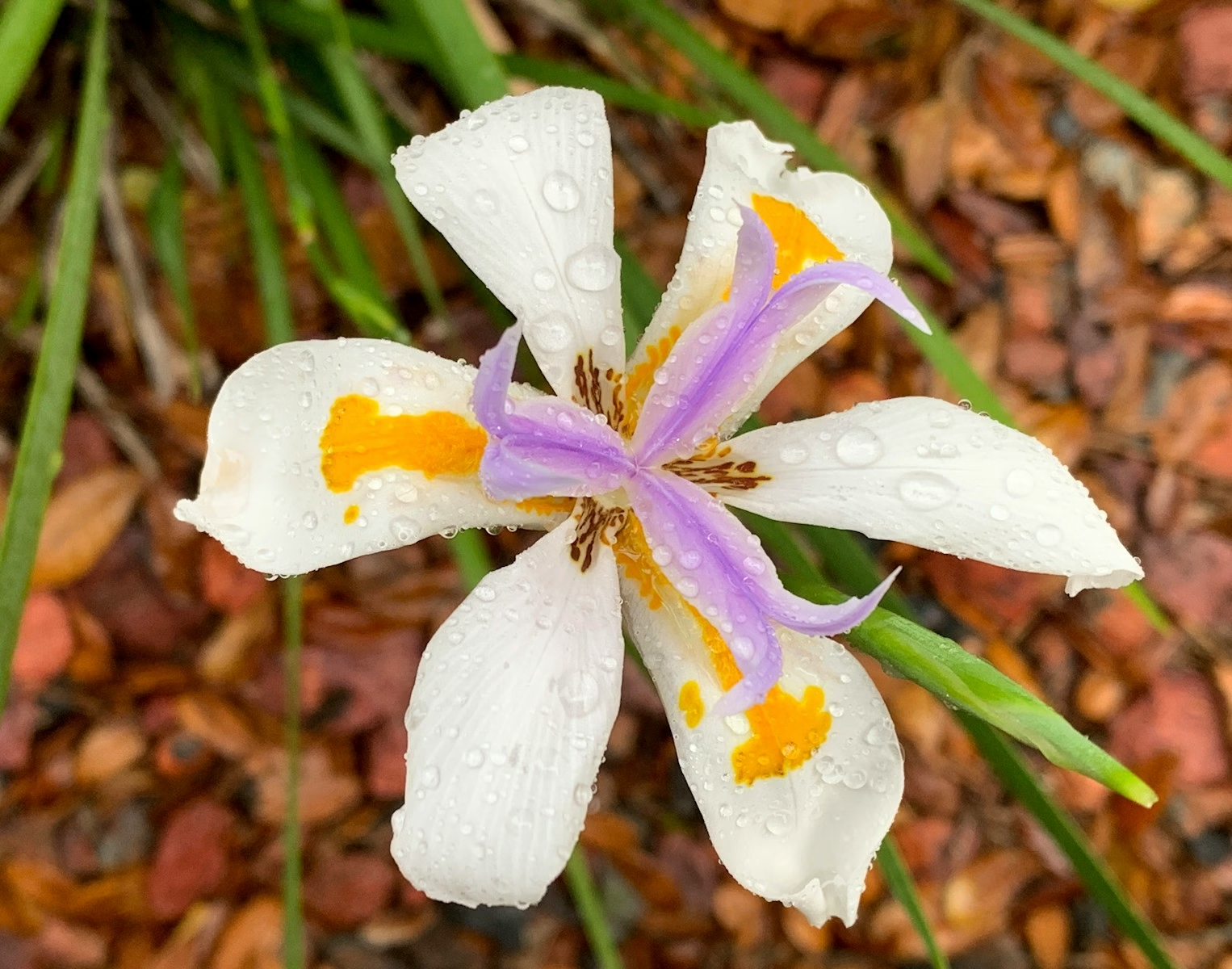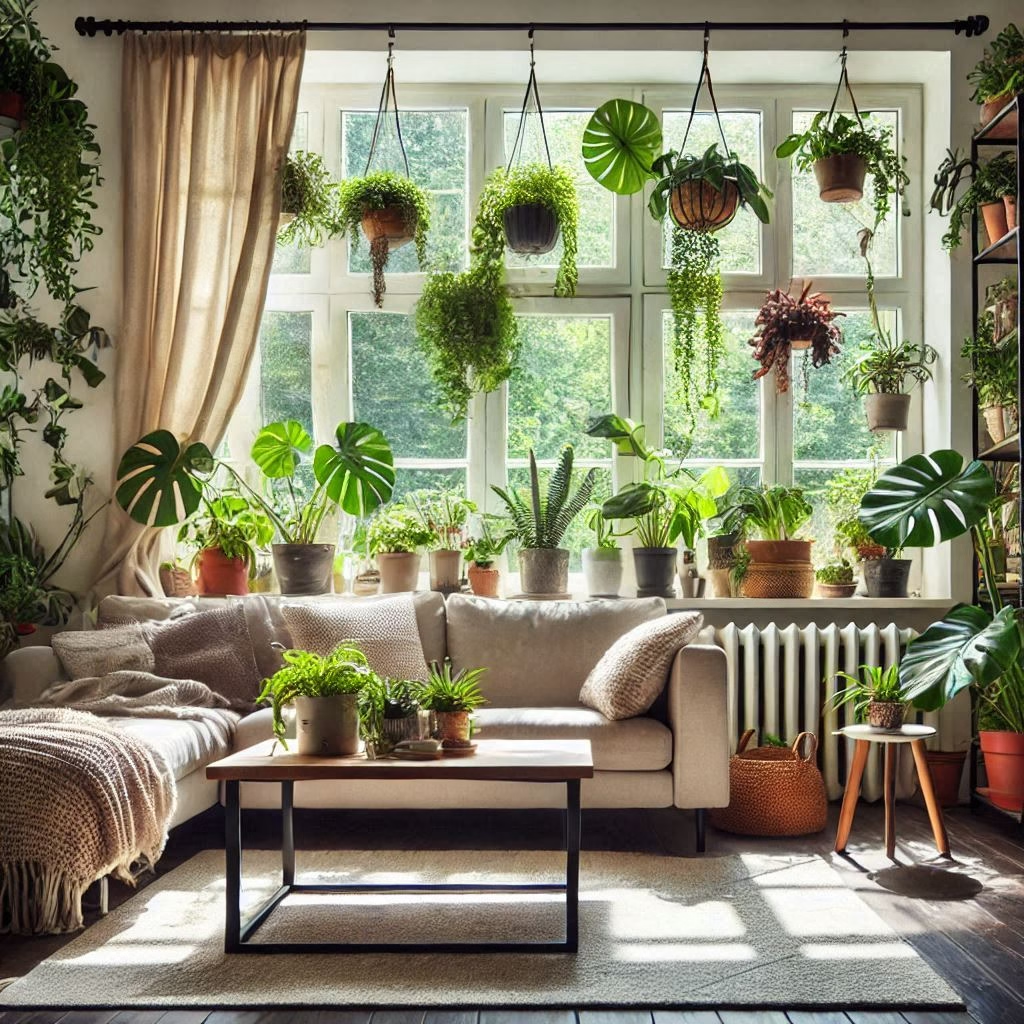African Iris:
African Iris (Dietes) is a striking and low-maintenance perennial plant known for its beautiful, sword-like leaves and delicate flowers. These hardy plants are perfect for adding a touch of elegance to any garden or indoor space. This comprehensive guide covers everything you need to know about growing and caring for African Iris.

Care
Proper care is essential to keep your African Iris healthy and thriving:
- Light: African Iris thrives in full sun to partial shade. Ensure they receive at least 4-6 hours of direct sunlight daily.
- Watering: Water regularly, allowing the soil to dry out slightly between waterings. Overwatering can lead to root rot.
- Soil: Use well-draining soil. African Iris prefers slightly acidic to neutral soil pH.
- Temperature: African Iris prefers moderate temperatures between 60-75°F (15-24°C). Protect them from frost and extreme heat.
- Fertilizing: Feed with a balanced fertilizer in spring and summer to promote healthy growth and abundant blooms.
Types
There are several types of African Iris, each with unique characteristics:
- Dietes iridioides: Known for its white flowers with yellow and blue markings.
- Dietes bicolor: Features pale yellow flowers with dark brown markings.
- Dietes grandiflora: Noted for its large, white flowers with yellow and violet markings.
- Dietes robinsoniana: A rare variety with white flowers and yellow centers.
Pruning
Pruning helps maintain the shape and health of your African Iris:
- Remove Dead or Faded Flowers: Deadhead spent blooms to encourage continuous flowering.
- Trim Back Foliage: Cut back dead or damaged leaves to keep the plant looking tidy.
- Divide Clumps: Every few years, divide the clumps to prevent overcrowding and promote healthy growth.
Propagating
African Iris can be easily propagated through division or seeds:
- Division: Divide the clumps in early spring or fall. Use a sharp knife or spade to separate the rhizomes and plant them in well-draining soil.
- Seed: Sow seeds in a seed tray with well-draining soil and cover them lightly with soil. Keep the soil moist and warm until germination.
Growing From Seeds
Growing African Iris from seeds is a rewarding process:
- Sow Seeds: Sow seeds in a seed tray with well-draining soil and lightly cover them with soil.
- Water and Cover: Mist the soil and cover the tray with plastic wrap to retain moisture.
- Germination: Place in a warm, bright location and wait for seeds to germinate (typically 2-4 weeks).
- Transplanting: Once seedlings are large enough to handle, transplant them into individual pots or directly into the garden.
Growing in Pots
African Iris thrives in pots with proper care:
- Pot Selection: Choose a pot with drainage holes to prevent waterlogging.
- Potting Medium: Use a well-draining potting mix, preferably one designed for perennials.
- Watering: Water regularly, but allow the soil to dry out slightly between waterings.
- Repotting: Repot every 2-3 years to refresh the soil and provide more space for growth.
Overwintering
Overwintering African Iris involves adjusting care to ensure their health during the colder months:
- Indoor Care: Move the plant indoors to a bright, cool location if you live in a region with harsh winters.
- Mulching: Apply a thick layer of mulch around the base of outdoor plants to insulate the roots.
- Reduce Watering: Water less frequently during winter, allowing the soil to dry out between waterings.
Harvesting Leaves
While African Iris leaves are not typically harvested, they can be used for decorative purposes:
- Timing: Harvest mature, healthy leaves.
- Method: Use clean scissors to snip leaves close to the base of the plant.
Common Pests
African Iris is relatively pest-resistant but can be affected by:
- Aphids: Small, sap-sucking insects. Treat with insecticidal soap or neem oil.
- Spider Mites: Tiny pests that cause stippling on leaves. Increase humidity and treat with insecticidal soap.
- Slugs and Snails: These pests can chew on the leaves. Use slug and snail baits or traps to control them.
Common Issues
Watch out for these common African Iris problems:
- Yellowing Leaves: Often caused by overwatering or poor drainage. Ensure soil drains well and adjust watering.
- Leaf Drop: Can result from sudden temperature changes or stress. Provide stable conditions and proper care.
- Root Rot: Caused by waterlogged soil. Ensure good drainage and avoid overwatering.
FAQ
- How often should I water my African Iris?
- Water regularly, allowing the soil to dry out slightly between waterings. Avoid overwatering.
- Can African Iris tolerate shade?
- African Iris prefers full sun to partial shade. However, blooming may be reduced in shaded areas.
- Do African Iris plants need fertilizer?
- Yes, fertilize in spring and summer with a balanced fertilizer to promote healthy growth and abundant blooms.
- How do I propagate African Iris?
- Propagate by dividing the clumps in early spring or fall, or by sowing seeds in well-draining soil.
- Why are the leaves on my African Iris turning yellow?
- Yellowing leaves can result from overwatering, poor drainage, or nutrient deficiencies. Adjust care accordingly.
Growing and caring for African Iris can be a rewarding experience, providing vibrant blooms and enhancing the beauty of your garden or indoor space. With the right care and attention, your African Iris will thrive and flourish.



